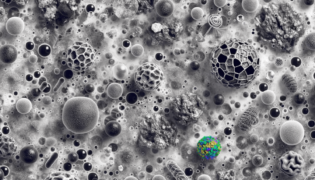No, Dr. Scholl’s products mainly focus on foot care and do not specifically offer skin tag removal solutions.
Skin Tags and Removal Methods
Skin tags are benign growths commonly found on the neck, armpits, and other skin folds. Many people seek skin tags remover solutions for comfort or cosmetic reasons.
Over-the-counter Skin Tags Remover Products
There are various over-the-counter skin tags remover products, such as creams and patches containing salicylic acid, which may help reduce the appearance of skin tags. However, these products should be used with caution and may not work for everyone.
Professional Skin Tags Removal
For a more reliable solution, a dermatologist can remove skin tags through methods such as cryotherapy, electrocautery, or surgical excision. These procedures are safe and effective when performed by a professional.
Skincare Logix Recommendations
As Skincare Logix, a blog about skincare, we advise consulting with a dermatologist for the best skin tags remover approach tailored to individual needs, rather than relying on generalized over-the-counter products that may not be effective or suitable for every person.
Introduction to Dr. Scholl’s Products
Dr. Scholl’s is a well-known brand that specializes in foot care products such as insoles, inserts, callus removers, and blister treatment solutions. As our focus at Skincare Logix, a blog about skincare, is on skin tags, it’s important to identify whether Dr. Scholl’s products can be used for skin tag removal.
Dr. Scholl’s and Skin Tags
Although Dr. Scholl’s offers a wide range of foot care solutions, they do not specifically provide skin tag removal products. Rather, their focus remains on addressing issues related to foot health and comfort. Therefore, Dr. Scholl’s is not an ideal option when seeking skin tags remover solutions.
Alternative Brands for Skin Tag Removal
Looking for alternative products offering to remove skin tags? There are several brands in the market that cater to skin tag removal, such as Compound W, TagBand, and Wartstick. However, Skincare Logix emphasizes the importance of checking with a dermatologist before using these products to ensure their suitability for individual skin types and needs.
Safe and Effective Skin Tag Removal
We at Skincare Logix encourage those seeking skin tag removal to prioritize their skin’s health by consulting a dermatologist who can recommend the most appropriate treatment. Professional methods such as cryotherapy, electrocautery, or surgical excision are considered safe and effective when performed by a qualified professional.
FAQ Section
Here are some frequently asked questions related to skin tags and treatment options that may provide further insights and guidance:
What causes skin tags?
Skin tags are usually caused by friction between skin surfaces or clothing. They commonly appear in areas like neck, armpits, eyelids, and groin, and are more prevalent in people with obesity or diabetes.
Are skin tags harmful?
No, skin tags are typically benign (non-cancerous) growths and pose no health risk. However, they might cause discomfort or irritation in some cases, depending on their location and size, which may lead to the desire for removal.
Can I remove skin tags at home?
At-home removal of skin tags using DIY methods is not recommended, as it may lead to infection, scarring, or other complications. It is advisable to consult a dermatologist or healthcare professional for safe and effective skin tag removal.
How much does professional skin tag removal cost?
The cost of professional skin tag removal varies depending on factors such as the treatment method, the number of skin tags, and the healthcare provider. It’s essential to consult with a dermatologist for a personalized quote based on individual needs.
Do skin tags grow back after removal?
Once a skin tag is removed professionally, it usually does not grow back. However, new skin tags might develop in other areas of the body, as skin tag formation is generally caused by friction between skin surfaces.




















